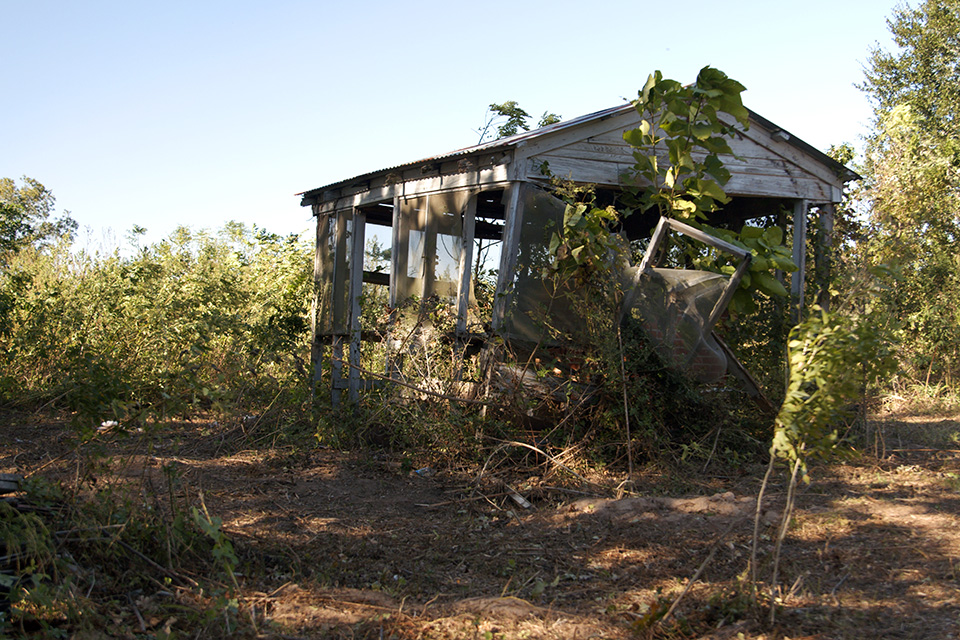Throughlines
Redefining Integrity
As evidenced throughout our history, time is not the only test facing a historic site, and human achievements are not all gained, perceived, or acknowledged equally. Recognizing that the creativity, craftsmanship, and environmental literacy of oppressed groups has historically been devalued, we now have the opportunity -- and obligation -- to expand our understanding of the historic significance and integrity of individual sites and their treatment, and of cultural landscapes in general.
 Dabney Hill, Burleson County, TX - Photo by Owen Schwartzbard, Edwards Media, 2021.
Dabney Hill, Burleson County, TX - Photo by Owen Schwartzbard, Edwards Media, 2021.
As bottom-up planning was taking hold in the landscape architecture discipline in the 1960s and 1970s, the historic preservation community was predominantly focused on protecting and nominating to the National Register of Historic Places great buildings and collections of structures that contributed to Historic Districts. During this period, and continuing today, when evaluating the lasting integrity and value of extant structures, the Secretary of the Interior defined integrity as “the ability of a property to convey its significance.” Sites retaining integrity were recognized as comprising seven key factors: materials, location, setting, design, workmanship, feeling, and association. In all cases, a heavy value was placed on extant physical fabric, thus giving an advantage to those historic properties that possessed material integrity while also representing human achievements in design that have withstood the test of time. This emphasis on legible materiality creates a condition in which intangible, or otherwise neglected or erased historically significant cultural landscapes and places are overlooked during the designation and preservation processes. A broadening of our lens in the design and historic preservation communities to increase the value placed on “feeling” and “association” to those “invisible” properties that witnessed significant people, events, and cultural lifeways is critical in addressing the issues identified in this report.